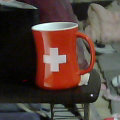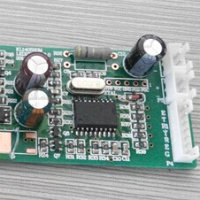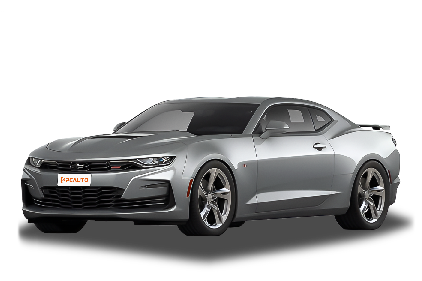Q
How big is a Camaro gas tank?
The fuel tank capacity of the Chevrolet Camaro varies depending on the model year and configuration, usually ranging from 72 to 74 liters (19 to 19.5 gallons). For example, the sixth-generation Camaro (2016 - 2023) has a 72-liter fuel tank, which meets the needs of Malaysian consumers for long-distance driving or weekend getaways.
The size of the fuel tank directly affects the cruising range. When paired with the common V6 or V8 engines in the Camaro, fuel consumption will vary according to driving habits and road conditions. It is recommended that car owners regularly check the fuel tank and fuel line system in Malaysia's hot climate to avoid problems such as evaporation or carbon deposits.
In addition, gasoline in Malaysia is divided into RON 95 and RON 97. The high-performance versions of the Camaro are recommended to use higher-grade fuel to optimize engine performance. At the same time, local car owners need to pay attention to the impact of fuel quality on turbocharging or direct-injection technology.
If you plan to modify or enhance the power of the vehicle, the fuel tank capacity may also be one of the factors to consider. It is advisable to consult a professional technician to ensure the compatibility of the fuel system with the upgraded components.
Special Disclaimer: This content is published by users and does not represent the views or position of PCauto.
Related Q&A
Q
Where are Camaros made?
The Chevrolet Camaro is currently mainly produced at the Lansing Grand River Assembly Plant in Michigan, USA. This plant has been responsible for manufacturing the sixth-generation Camaro since 2015, and the fifth-generation models were also produced here before. As one of the representatives of American muscle cars, the production lines of the Camaro are concentrated in the United States to ensure the authentic design and performance tuning.
For car enthusiasts in Malaysia, the Camaro is usually purchased through import channels. Although there is no local production line, some dealers may offer officially imported right-hand drive versions to meet the market demand. The Camaro is a niche but highly-noticed model in Malaysia. Its classic V8 engine and rear-wheel drive layout are deeply loved by performance car enthusiasts, and there is also a turbocharged four-cylinder version that is more suitable for daily driving.
It should be noted that imported cars in Malaysia are subject to relatively high tariffs and registration fees, so the selling price may be much higher than that in the original market. However, this also makes the Camaro more unique locally. If you are interested in the Camaro, it is recommended to contact the official Chevrolet dealers in Malaysia to learn about the latest vehicle configurations and after-sales support.
Q
Do Camaros have longevity?
As one of the representatives of American muscle cars, the durability of the Chevrolet Camaro depends on the maintenance condition and usage environment. In the tropical climate of Malaysia, it's particularly important to regularly replace the coolant and check the cooling system, as high temperature and humidity may accelerate the aging of rubber parts and electronic components. Models equipped with the 6.2L V8 LT1 engine feature lightweight designs such as aluminum alloy cylinder blocks, which helps reduce the thermal load. The 2.0T turbocharged version is more suitable for city driving and more fuel-efficient. If you insist on changing the full-synthetic oil every 5,000 kilometers and promptly address the potential chassis rust issues in coastal areas, the car can easily exceed 200,000 kilometers in mileage. It's worth noting that for American cars imported into Malaysia, special attention should be paid to the supply cycle of original parts. It's recommended to obtain genuine parts through authorized service centers. Meanwhile, the rear-wheel-drive layout of this car requires careful driving during the rainy season, especially when using performance tires, attention should be paid to their drainage performance. For owners who love American muscle cars but are worried about maintenance costs, they can follow the actual car - using experience sharing of the local Camaro owners' club.
Q
Is a Camaro a V6 or V8?
The Chevrolet Camaro is a classic American muscle car that offers a variety of powertrain configurations, including V6 and V8 engines, depending on the model and year. In the Malaysian market, the Camaro is mainly sold as an imported vehicle. Common versions include those equipped with a 3.6-liter naturally-aspirated V6 engine, which can produce around 335 horsepower, and the high-performance SS version, which comes with a 6.2-liter V8 engine capable of delivering over 455 horsepower. For Malaysian consumers, the choice between the V6 and V8 depends on personal preference. The V6 version is more suitable for daily driving and has better fuel economy, while the V8 version offers more powerful performance and a purer driving experience. It's worth noting that Malaysia's automotive tax policy has a significant impact on vehicles with larger displacements. As a result, the price of the V8-powered Camaro is significantly higher than that of the V6 version. Additionally, the Camaro is loved by many car enthusiasts for its unique American design and excellent handling performance. Both the V6 and V8 versions can provide an exciting driving experience.
Q
Is a Chevy Camaro considered a sports car?
The Chevrolet Camaro is indeed widely regarded as a classic American muscle car and also possesses the characteristics of a sports car, so it can be classified as a sports car. The Camaro offers powerful performance, especially its high-performance versions like the SS or ZL1, which are equipped with V8 engines, providing excellent acceleration and handling experiences, meeting the high-performance requirements of sports cars. In addition, its low-slung body design, rear-wheel-drive layout, and sport-oriented suspension tuning further enhance its sporting attributes. In Malaysia, although the Camaro is not very common, its unique American style and robust performance still attract many car enthusiasts. It should be noted that the line between sports cars and muscle cars is sometimes blurred, but the Camaro successfully combines the characteristics of both with its balanced performance and driving pleasure. If you're interested in this type of vehicle, you can also pay attention to other models with a similar positioning, such as the Ford Mustang or the Dodge Challenger, which also have the dual charm of muscle cars and sports cars.
Q
Are Camaros RWD or AWD?
The Chevrolet Camaro is a classic American muscle car. The vast majority of its models adopt a rear-wheel drive (RWD) layout. This design can offer a more direct driving pleasure and a stronger sense of acceleration, especially excelling in straight-line driving, which aligns with its sporty positioning. However, the Camaro has also introduced all-wheel drive (AWD) versions, such as in some specific early models or high-end configurations, to meet different driving needs. Especially in regions with heavy rainfall or complex road conditions, AWD can provide better grip and stability.
For consumers in Malaysia, although the Camaro is not a common local vehicle, if they purchase it through parallel import, they need to confirm the drivetrain type. The rainy climate in Malaysia may make AWD more practical. In addition, rear-wheel drive cars require more cautious driving skills on slippery roads, while AWD can reduce the risk of skidding. Whether it's RWD or AWD, the Camaro attracts car enthusiasts with its powerful performance and classic design. The choice can be made according to personal driving habits and actual needs.
Q
Which Camaro has the most horsepower?
Among the currently available Chevrolet Camaro models, the Camaro ZL1 has the highest horsepower. It is equipped with a 6.2-liter V8 supercharged engine, which can output a powerful 650 horsepower, and the torque reaches an astonishing 881 N·m. It is paired with a 10-speed automatic transmission or a 6-speed manual transmission, delivering outstanding performance. It can accelerate from 0 to 100 km/h in just about 3.5 seconds, truly being the performance flagship of the Camaro family. For car enthusiasts in Malaysia, although the Camaro ZL1 is quite rare there, its high-performance capabilities still leave a deep impression, especially on those who are fond of American muscle cars. The Camaro lineup also includes versions like the SS and LT, with horsepower ranging from 275 to 455, catering to consumers with different needs. If you're interested in high-performance cars, you can also keep an eye on other American muscle cars such as the Ford Mustang Shelby GT500 or the Dodge Challenger Hellcat. They are also well - known for their powerful engines. However, in the Malaysian market, these models are usually introduced through parallel import, which means the prices and maintenance costs will be relatively high.
Q
What engine is in the Camaro?
The Chevrolet Camaro currently offers a variety of engine options to meet different driving needs. These include a 2.0-liter turbocharged four-cylinder engine (with a maximum power of 275 horsepower, suitable for daily driving and fuel economy), a 3.6-liter naturally aspirated V6 engine (335 horsepower, balancing performance and practicality), and a high-performance 6.2-liter V8 LT1 engine (455 horsepower, featured in the SS model and equipped with an active fuel management system). For the Camaro ZL1 version, which is aimed at those seeking ultimate performance, it uses a supercharged 6.2-liter LT4 V8 engine that can output up to 650 horsepower, paired with a 10-speed automatic or 6-speed manual transmission.
In the Malaysian market, the Camaro is mainly sold as an imported vehicle. Affected by local tax policies, the V8 version is relatively rare, but it can still be purchased through parallel import. It's worth noting that the engine technology of the Camaro focuses on efficient combustion and lightweight design. For example, the V8 models use direct-injection and variable valve timing technologies, while the four-cylinder turbocharged version achieves low fuel consumption with a small displacement, making it suitable for Malaysia's high-oil-price environment.
If you're considering a used Camaro, you need to pay attention to maintenance costs. In particular, the supply cycle of spare parts for V8 models may be longer. It is recommended to buy through regular channels to ensure after-sales support.
Q
Is the Chevrolet Camaro a muscle car?
The Chevrolet Camaro is truly a classic muscle car. It originated in the United States in the 1960s, featuring a large-displacement V8 engine, rear-wheel drive, and a highly muscular exterior design. These characteristics perfectly match the definition of a muscle car. In particular, high-performance versions like the Camaro SS and ZL1 are the representatives of muscle cars. However, the Camaro has more agile handling performance than traditional muscle cars because it uses modern chassis tuning, which makes its performance in corners closer to that of a sports car. In Malaysia, although the Camaro is relatively rare, its unique American style and powerful performance still attract many car enthusiasts.
The muscle car culture originated in the United States. Besides the Camaro, representative models include the Ford Mustang and the Dodge Challenger. They are all known for their high horsepower, bold designs, and affordable prices. Nowadays, muscle cars are constantly evolving. For example, the Camaro offers an entry-level option with a turbocharged four-cylinder engine, which also takes fuel economy into account. This allows more Malaysian consumers to experience the charm of American muscle cars. Meanwhile, such models are also quite popular in the second-hand car market, making them a great choice for those who pursue individuality and performance.
Q
What is the lifespan of a Camaro?
The lifespan of the Chevrolet Camaro depends on various factors, including daily maintenance, driving habits, and the climate conditions in Malaysia. Generally speaking, if regular maintenance is carried out, such as changing the oil, checking the braking system and tires, the Camaro can travel over 200,000 kilometers or even longer. The high-temperature and humid weather in Malaysia may have a certain impact on the vehicle's electronic systems and metal components. Therefore, it is recommended that car owners pay more attention to the maintenance of anti-rust and the cooling system.
As a performance car, the engine and transmission of the Camaro are designed to be quite durable. However, aggressive driving will accelerate wear and tear. Appropriate gentle driving can extend its service life. In addition, using original parts and having regular inspections at authorized service centers can also effectively improve the vehicle's durability. For Malaysian car owners who love the Camaro, understanding these maintenance details can not only extend the lifespan of their beloved cars but also maintain their excellent performance.
Q
Why are Camaros so rare?
The Chevrolet Camaro is quite rare in Malaysia. The main reason is that its positioning as an American muscle car differs from the local market demand. The Malaysian automotive market is dominated by economy cars, SUVs, and Japanese-made vehicles. The Camaro, a large-displacement rear-wheel-drive sports car, is a niche model in the local area. Coupled with high import taxes and the price of gasoline, its ownership rate is relatively low. Additionally, Chevrolet's dealer network in Malaysia is relatively limited, which further reduces the Camaro's visibility.
However, with its classic design and powerful performance, the Camaro still attracts many car enthusiasts, especially in the car modification circle and among performance car fans. If you're interested in this kind of American muscle car, you can also look into other similar models, such as the Ford Mustang. It has a relatively higher visibility in Malaysia, partly because Ford has a more comprehensive sales and service network locally.
Latest Q&A
Q
How big is Myvi fuel tank?
As one of the most popular national cars in Malaysia, the fuel tank capacity of the Perodua Myvi varies according to different generations and versions. The standard fuel tank capacity of the current third - generation Myvi (from 2017 to present) is 36 liters. It features a lightweight resin fuel tank design, which balances the fuel storage needs and the vehicle's body weight.
The fuel tank size of this B - segment model matches the fuel economy of its 1.3L/1.5L engines. It can provide a cruising range of approximately 450 - 550 kilometers under combined driving conditions, making it suitable for urban commuting and short - distance trips. It's worth noting that the actual available fuel tank capacity might be slightly less than the nominal value. This is because about 5% of the tank space is reserved for fuel expansion as a safety measure.
For owners planning long - distance drives, it is recommended to use the fuel efficiency display function on the Myvi's dashboard to monitor fuel consumption in real - time. Also, it's advisable to develop the habit of refueling when the fuel gauge shows that there is about 1/4 of the fuel left. This can prevent the fuel pump from overheating and also help deal with the situation where gas stations are far apart in some remote areas of Malaysia.
Some comparable models in the same segment, like the Proton Iriz, have a 40 - liter fuel tank. However, the actual cruising range needs to be considered in combination with the engine efficiency. Thanks to Perodua's mature powertrain tuning, the Myvi always maintains a competitive edge in terms of fuel economy.
Q
Does Myvi use CVT?
Yes, the Perodua Myvi does use CVT (Continuously Variable Transmission) technology in some models, especially the newer ones. For instance, the third-generation Myvi, launched in 2017, and its subsequent versions are equipped with D-CVT (Dual Mode Continuously Variable Transmission) to offer a smoother driving experience and better fuel efficiency. CVT technology optimizes engine performance through continuously variable gear ratios. Compared with traditional automatic transmissions, it can adapt to driving conditions more flexibly, thereby enhancing overall driving comfort. However, earlier Myvi models may have used a traditional 4-speed automatic transmission. So, whether a specific model is equipped with a CVT needs to be confirmed based on the model year and configuration. For Malaysian consumers, the advantages of CVT lie in its smoothness and fuel - saving performance during city driving, which is very suitable for the common local traffic conditions. But if you're looking for more direct power feedback, some drivers may prefer the manual transmission version. If you're considering buying a Myvi, it's recommended to check the official specifications or consult a dealer to confirm the transmission type. You can also take a test drive to see if the actual performance of the CVT meets your driving preferences.
Q
What kind of gearbox is Myvi?
The Myvi is equipped with a Dual Mode CVT (D-CVT) transmission, which is a dual-mode continuously variable transmission. Compared with traditional CVT transmissions, it has an additional gear for high-speed driving, which helps the vehicle achieve better fuel efficiency.
In daily driving, this transmission drives the vehicle in CVT mode. Thanks to the operation of the steel belt, the vehicle moves smoothly and linearly, enhancing comfort. What makes the D-CVT special is that it automatically switches to the gear mode when driving at high speeds. Different from CVT transmissions of other brands, when driving at high speeds, the engine speed of vehicles with ordinary CVT transmissions will increase, the engine noise will get louder, and the fuel consumption will rise. Moreover, the power will decline after exceeding the maximum horsepower speed. However, after the gear of the D-CVT engages, the engine speed decreases, allowing the engine to maintain a reasonable speed and providing the vehicle with continuous and abundant power.
Q
Are Myvi and vios the same engine?
Some models of the Myvi and the Vios use the same engine. Daihatsu and Perodua have a joint - venture engine production plant in Negeri Sembilan, Malaysia, which provides power for multiple models including the Vios. Some models of the Vios and the Myvi are equipped with the 1.5L Dual VVT - i engine. This engine features high efficiency, reliability, and economy. Although its power is not extremely strong (the official 0 - 100km/h acceleration time of the Myvi 1.5 is 10.2 seconds), its low fuel consumption and durability are well - loved by consumers. However, these two cars have different positioning and market targets. Even if they share the engine platform, there are differences in vehicle tuning, configuration, and the overall driving experience.
Q
How many cylinders are in the MYVI?
As one of the most popular national cars in Malaysia, the engine configurations of the Perodua Myvi vary according to different years and versions. Currently, the mainstream models are equipped with two types of Dual VVT - i four - cylinder naturally aspirated engines, namely the 1.3L (1NR - VE) and 1.5L (2NR - VE). Therefore, all Myvi models feature a four - cylinder design. This four - cylinder layout ensures smooth power delivery while taking fuel economy into account, making it highly suitable for the urban road conditions in Malaysia.
It's worth mentioning that four - cylinder engines, due to their simple structure and low maintenance costs, are widely used in B - segment models in the local market. For example, the Proton Saga and Honda City also adopt a similar layout. The 1.5L version of the Myvi can output 102 horsepower and 136 Nm of torque. Coupled with its lightweight body design, it can offer a well - balanced performance whether driving on the congested streets of Kuala Lumpur or cruising on the highway.
For readers who want to learn about engine technology, they can note that the Dual VVT - i system used in the Myvi can intelligently adjust the valve timing. This technology shared by Toyota helps to improve fuel efficiency by about 15%. That's why the Myvi has remained one of the most fuel - efficient cars in Malaysia for years.
View More


















Pros
Cons